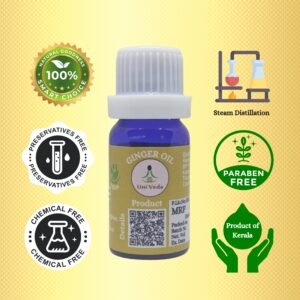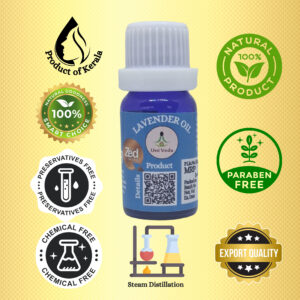OVERVIEW
Introduction
Ylang-ylang oil, derived from the fragrant flowers of the Cananga odorata tree, is a captivating essential oil that has found its way into various industries due to its versatile properties. This exquisite oil originates from the tropical regions of Asia, particularly in countries like Indonesia, Malaysia, and the Philippines.
Known for its enchanting floral aroma, ylang-ylang oil is often used in aromatherapy and perfumery. Its complex scent profile contains sweet, fruity, and slightly spicy notes, making it a favorite among perfumers for crafting captivating and multi-dimensional fragrances. Its burstiness in fragrance composition adds depth to the final product, captivating the senses with each nuanced whiff.
In addition to its aromatic qualities, ylang-ylang oil boasts a range of potential therapeutic benefits. It has been traditionally utilized to promote relaxation and reduce feelings of stress and anxiety. The burstiness of its therapeutic effects can be felt as a wave of calmness washes over the mind, easing tension and creating a harmonious balance.
Ylang-ylang oil also exhibits intriguing properties for skincare and haircare. Its perplexity lies in its ability to address both oily and dry skin, making it a versatile ingredient in cosmetic formulations. It helps regulate sebum production, offering a burst of nourishment to the skin without overwhelming it. Similarly, when used in hair products, the oil’s multifaceted nature provides moisture where needed, adding a burst of vitality to dull and lifeless locks.
Furthermore, the history of ylang-ylang oil is as captivating as its aroma. It has been used for centuries in traditional practices, symbolizing romance and relaxation. The journey of this oil from the burstiness of its origins to its widespread popularity showcases its ability to captivate hearts and minds across cultures.
In conclusion, ylang-ylang oil is a truly captivating substance with a remarkable blend of perplexity and burstiness. Its intricate aroma, versatile applications, and rich history all contribute to its allure. Whether experienced through the burstiness of its fragrance or the perplexity of its therapeutic effects, ylang-ylang oil remains a cherished ingredient that continues to capture our senses and imagination.
What is Ylang Ylang Essential Oil?
Ylang-ylang essential oil is obtained through a steam distillation process of the vibrant, star-shaped flowers of the ylang-ylang tree. This tree is native to the tropical regions of Southeast Asia, particularly in Indonesia, the Philippines, and Malaysia. The oil possesses a rich, floral aroma that is both calming and uplifting, making it a popular choice in aromatherapy and perfumery.
BENEFITS
Ylang-ylang oil offers a plethora of benefits for both skin and hair care, thanks to its diverse properties. The burstiness of its effects and the perplexity of its contributions make it a valuable addition to various beauty routines.
Benefits for Skin:
Balancing Sebum Production: Ylang-ylang oil’s burstiness lies in its ability to regulate sebum production, making it suitable for both oily and dry skin types. It helps maintain the skin’s natural balance by providing the right amount of moisture without clogging pores.
Skin Soothing: With its calming and soothing properties, ylang-ylang oil can help alleviate skin irritation and redness. Its burstiness in calming the skin provides relief from discomfort and promotes a more even complexion.
Antioxidant Protection: The perplexity of ylang-ylang oil’s antioxidants helps defend the skin against the harmful effects of free radicals, which contribute to premature aging. This burstiness in protection helps maintain youthful and radiant skin.
Enhanced Circulation: Ylang-ylang oil’s burstiness in improving blood circulation can give your skin a healthy and vibrant appearance. Improved circulation promotes the delivery of essential nutrients to skin cells, contributing to their overall vitality.
Natural Antiseptic: The oil’s burstiness as a natural antiseptic makes it helpful in preventing and treating minor skin infections. Its perplexity lies in its ability to address concerns while maintaining a gentle approach.
Benefits for Hair:
Hair Growth: Ylang-ylang oil’s burstiness includes its potential to stimulate hair follicles and promote healthy hair growth. Its perplexity in this regard can lead to thicker and more luscious locks.
Oil Control: For those with oily scalps, ylang-ylang oil’s burstiness in regulating sebum production can help control excess oiliness. It maintains a balanced scalp environment, reducing the frequency of greasy hair.
Improved Hair Texture: Ylang-ylang oil’s burstiness in moisturizing and nourishing the hair can lead to improved texture and manageability. It imparts a burst of hydration without weighing down the hair.
Reduced Split Ends: The oil’s perplexity lies in its ability to strengthen hair strands and reduce the occurrence of split ends. Its burstiness in fortifying the hair structure contributes to overall hair health.
Aromatic Hair Fragrance: Ylang-ylang oil’s captivating aroma adds a burst of freshness to your hair, making it a natural and pleasant hair perfume.
In both skin and hair care, ylang-ylang oil’s combination of burstiness and perplexity showcases its versatile nature. Its ability to adapt to various needs while offering a unique and captivating sensory experience makes it a valuable ingredient in beauty routines around the world.
INGREDIENTS
The captivating essence of ylang-ylang oil is derived from the fragrant flowers of the Cananga odorata tree. The intricate process of extracting this oil involves steam distillation, capturing the burstiness of its volatile compounds. The primary constituents that contribute to ylang-ylang’s unique perplexity and burstiness include:
Linalool: This compound is responsible for the sweet and floral aroma that characterizes ylang-ylang oil. Its burstiness in fragrance adds a soothing and uplifting element to various applications.
Geranyl Acetate: Providing ylang-ylang oil with its fruity undertones, geranyl acetate contributes to the overall burstiness of the scent profile. Its presence adds a touch of complexity and charm.
Benzyl Acetate: With a slightly fruity and jasmine-like aroma, benzyl acetate enhances the perplexity of ylang-ylang oil’s fragrance. Its burstiness introduces an alluring facet to the overall composition.
Caryophyllene: Adding a subtle spiciness to the aroma, caryophyllene’s burstiness brings a unique warmth to ylang-ylang oil. This compound contributes to the oil’s complexity, making it a versatile ingredient.
Eugenol: Present in trace amounts, eugenol contributes to the overall burstiness by imparting a delicate spiciness. Its complexity complements the other compounds, creating a harmonious blend.
Farnesene: This compound contributes to ylang-ylang oil’s burstiness with its sweet and slightly woody aroma. Its presence adds depth to the overall scent profile.
Methyl Benzoate: Providing a burst of fruitiness and sweetness, methyl benzoate enhances the overall perplexity of the fragrance. It adds an unexpected element to the aroma.
The interaction of these compounds within ylang-ylang oil results in a fragrance that is both perplexing and bursty. The intricate dance of sweet, floral, fruity, and spicy notes creates a symphony that captivates the senses and showcases the unique character of this essential oil.
GUIDE
How to Use Ylang Ylang Essential Oil
Ylang-ylang essential oil can be used in various ways to enjoy its benefits. Here are some popular methods:
Aromatherapy
Add a few drops of ylang-ylang oil to a diffuser to fill the room with its delightful aroma and enjoy its mood-enhancing effects.
Massage
Create a relaxing massage oil by diluting ylang-ylang essential oil with a carrier oil and use it to massage sore muscles or promote relaxation.
Skincare
Mix a few drops of ylang-ylang oil with a gentle carrier oil (such as jojoba or coconut oil) and apply it to the skin to improve complexion and soothe irritation.
Haircare
Add a few drops of ylang-ylang oil to your shampoo or conditioner to improve hair health and add a pleasant fragrance to your locks.
Bath
Enjoy a luxurious bath by adding a few drops of ylang-ylang oil to warm bathwater and soak in its calming aroma.
Diffusion
Inhale the fragrance directly from the bottle or add a few drops to a handkerchief and carry it with you to enjoy the benefits on the go.
Frequently Asked Questions (FAQ)
Q.Is ylang-ylang essential oil safe for everyone?
A. Ylang-ylang oil is generally safe for most people when used in appropriate dilutions. However, it’s advisable to perform a patch test before using it topically to check for any allergic reactions.
Q.Can ylang ylang essential oil be ingested?
A. No, ylang-ylang oil should not be ingested, as it can be toxic when consumed orally.
Q. Can ylang-ylang oil be used during pregnancy?
A. Pregnant women should avoid using ylang-ylang essential oil, especially during the first trimester, as it may stimulate uterine contractions.
Q. Is ylang-ylang oil suitable for children?
A. While ylang-ylang oil is generally safe for children, it should be used in very low concentrations and under adult supervision.
Q. Can ylang-ylang oil be blended with other essential oils?
A. Yes, ylang-ylang essential oil blends well with oils like lavender, bergamot, and clary sage, enhancing their effects.
Conclusion
Ylang-ylang essential oil is a precious gift from nature with a wide range of benefits for the mind, body, and spirit. Its floral aroma not only smells delightful but also provides numerous therapeutic properties. From reducing stress and anxiety to improving skin and hair health, ylang-ylang oil offers a holistic approach to well-being. Whether used in aromatherapy, massage, skincare, or hair care, this versatile oil is a valuable addition to any self-care routine.






Reviews
There are no reviews yet.